Return to Marshall Space Flight Center
Jupiter-C
The Marshall Rocket Garden has what it calls a Jupiter-C, although it appears to me that it is a Juno I.
The Jupiter-C consisted of an elongated Redstone missile (the center unit, the portion of the rocket consisting of the propellant tanks, was stretched from 32.08 feet in the standard Redstone to 37.50 feet) burning LOX and Hydyne (a mixture of 60% unsymmetrical dimethylhydrazine [UDMH] and 40% diethylenetriamine), rather than the normal LOX and alcohol/water (75%/25%) mix. It was topped with two solid-propellant stages, a cluster of scaled-down Sergeant motors.
The Jupiter-C had three flights, all in support of the Jupiter missile program. The first flight, RS-27, was fitted with a dummy fourth stage and was a test of the rocket itself. The remaining two flights were fitted with ablative nose cones, scaled down versions of the nose cone to be used on the Jupiter, rather than the dummy fourth stage. The second flight, RS-34, suffered a failure of the second stage. The third flight, RS-40, on August 7, 1957, was completely successful. After the launch of Sputnik, President Eisenhower showed off the recovered ablative nose cone in a televised speech.
The Juno I is closely related to the Jupiter-C: Rather than a Jupiter-type reentry vehicle, it carried a live fourth stage and the payload; the Explorer I satellite was the same diameter as and remained attached to the fourth stage. As this booster appears to have a simulated fourth stage, it would appear to be a Juno I rather than Jupiter-C, although the sign labels it a Jupiter-C.
I photographed the Jupiter-C on my July 2012 visit. Unfortunately, by the time we visited the Rocket Garden, my camera's memory cards were nearly full and the hot Alabama summer sun had begun to take its toll. Due to the combination of these factors, I have relatively few photos of the Jupiter-C.
I do, however, have photos of several other Jupiter-C and Juno I rockets (including one in the state of Alabama!) listed on my Space Race page (just do a find in page for "Jupiter-C" and "Juno I").
As the Jupiter-C has as its first stage an elongated Redstone missile, most of my Redstone-related resources are also applicable, at least for basic information. Also see the former Space Launch Report's account of the Jupiter-C. For information about the Juno program, see The Juno Program.
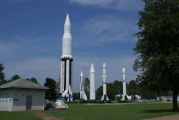 dsc84905.jpg |
 dsc67287.jpg |
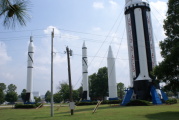 dsc67077.jpg |
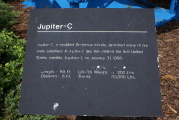 dsc84937.jpg |
 dsc84947.jpg |
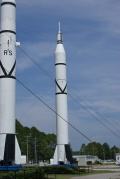 dsc84931.jpg |
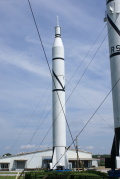 dsc84980.jpg |
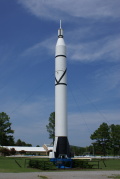 dsc84961.jpg |
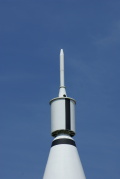 dsc85061.jpg |
Return to Marshall Space Flight Center